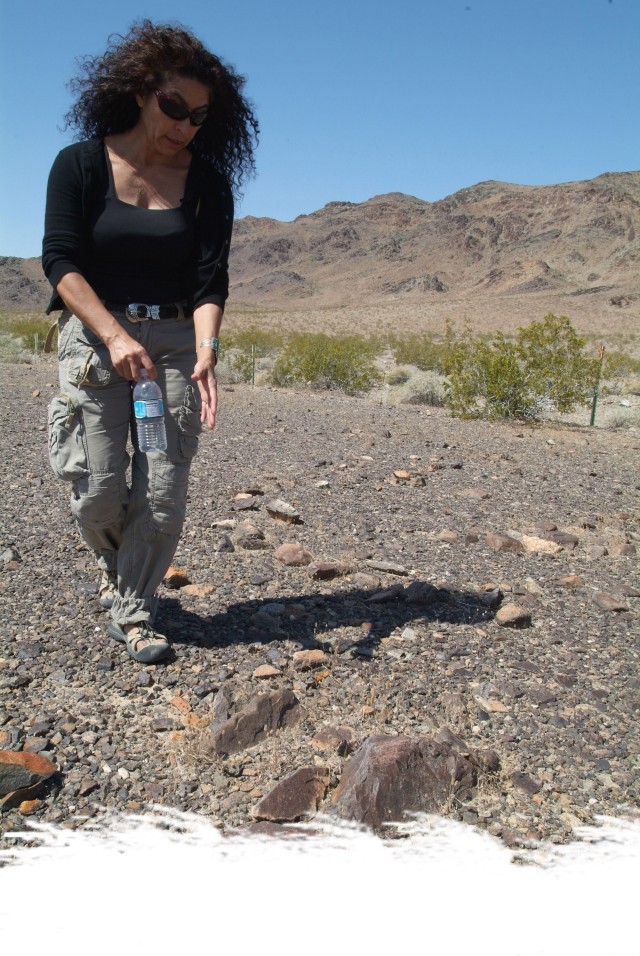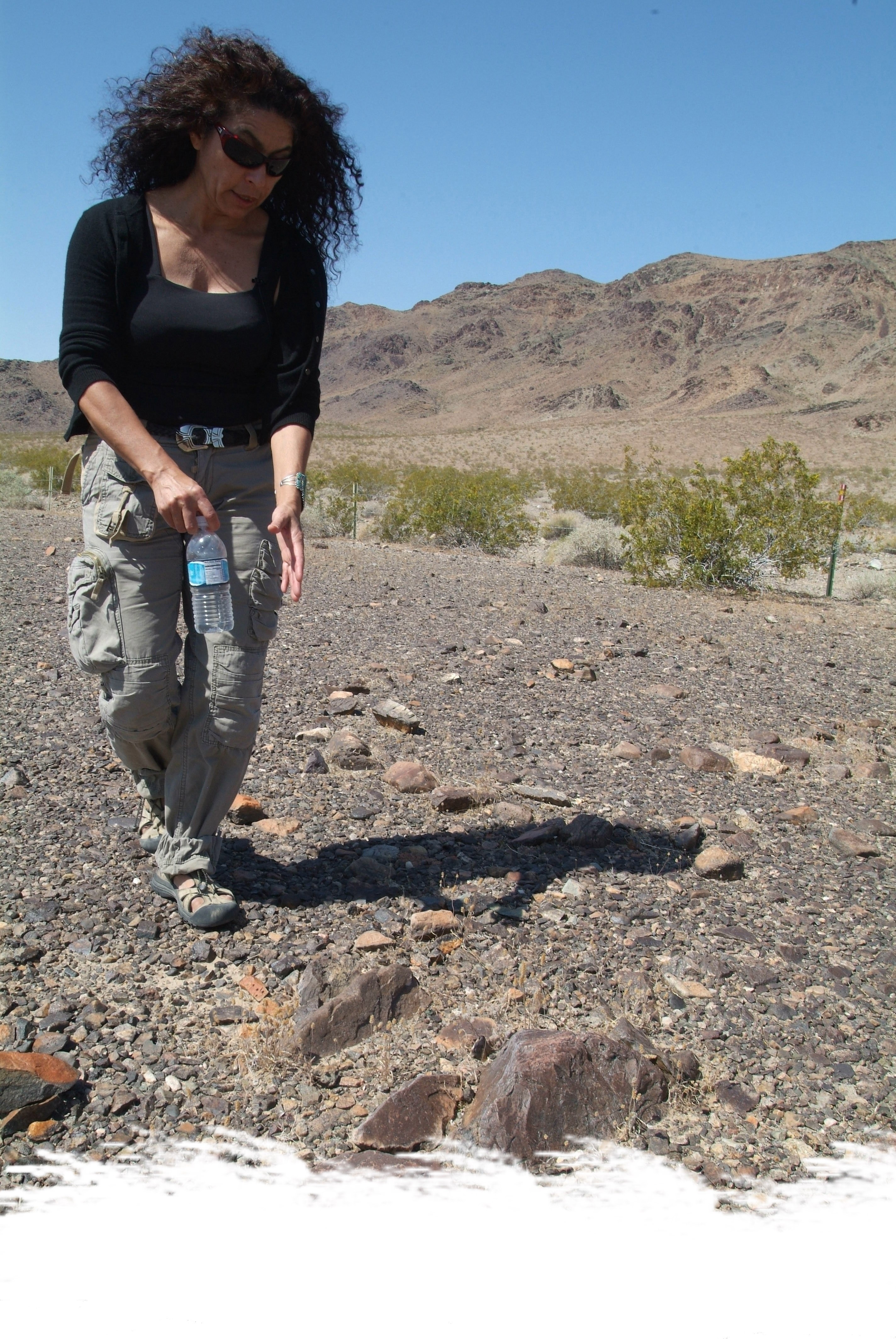At first glance, California's Mojave Desert might seem barren and devoid of humanity. But look again, and you'll see what Luz Ramirez de Bryson sees.
"The past and present all merge into one," said Ramirez, archaeologist and cultural resources manager for Fort Irwin, Calif. "One can almost see the early people moving through this area," she said.
Where the untrained eye takes in an almost alien landscape of dry shrub and stone, Ramirez points to places where water flowed and the ancient, nomadic Silver Lake people lived their lives some 7,000 to 8,000 years ago.
They were one of many cultures that used the land and left records in the rock. Years ago, archaeologists working on Fort Irwin found petroglyphs, images chipped and scraped into rock formations; and pictographs, paintings on rock. But in the newly acquired areas of Fort Irwin, Ramirez found another form of rock art, one she recognized from her experience studying the high desert of Chile: geoglyphs.
Also known as intaglios, geoglyphs mark the land itself for an artistic purpose. The most famous are the lines in Peru's Nazca desert, where, from the air, one can see monkeys, birds and lines once thought to be landing strips for extraterrestrials. A famous human figure lies in the Mojave near Blythe, Calif., less than two hours south of Fort Irwin.
The Fort Irwin geoglyphs are abstract alignments of fist-sized rocks covering perhaps a quarter of an acre. One set is a collection of seemingly random straight lines; another swirls and branches in a deliberate but undecipherable pattern.
Embedded in the sun-darkened crust called desert pavement, the lines are practically invisible until Ramirez begins to describe them. Before she brought her Chilean-trained eye to the site, researchers had found only small rock circles. Artifacts and oxidation of the rocks give clues about the formation's age.
"One of the attractions for me is this land is so revealing, and very predictable," Ramirez said. In the desert, "you can see every scar, every signal, everything that's happened here. It's all laid out."
Ramirez refuses to make more than the most general speculations about the meaning of the lines: designating a meeting place for nomadic families, perhaps, or some form of ceremony. Some broken quartzite found on the site points to the latter, she said. "You know, it's all speculation because really I have no idea."
Meanings are tied to culture. "After contact with the Europeans a lot of the stories that come down through song and story to tell the newcomers or the youngsters in the area are forgotten, so it's very difficult to know what the rock meant," Ramirez said.
As with other significant rock art and prehistoric sites on post, Fort Irwin will protect the geoglyphs. Soldiers will learn how to recognize and avoid damage to the sites, but they won't know their exact locations. Training will incorporate the fenced-off areas as contaminated sites or similar no-trespassing zones. Archaeologists and other interested people will be able to visit the sites on guided tours.
"We have to look at it from the perspective that if we have something special we should protect it," Ramirez says. "Also, I think it's important to support the Army and its activities because it protects our country."


Social Sharing